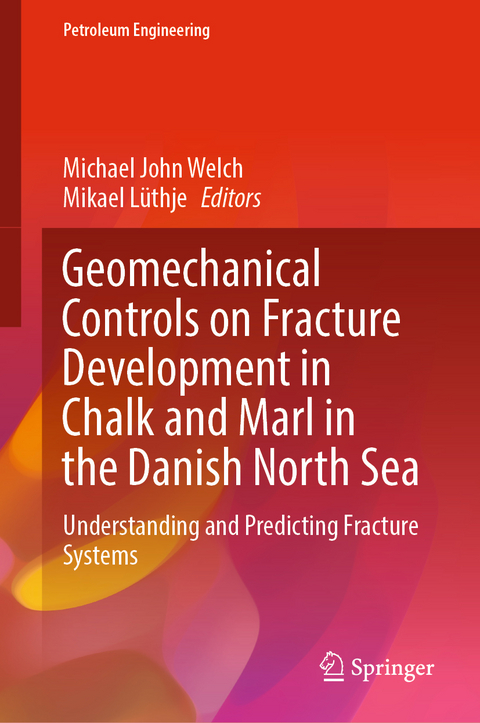
Geomechanical Controls on Fracture Development in Chalk and Marl in the Danish North Sea
Springer International Publishing (Verlag)
978-3-031-35326-0 (ISBN)
This book summarizes new discoveries on fracturing in chalk. Based on studies on the Danish North Sea, this book shows how observations from outcrop analogues, core and seismic data can be used to characterize the density, distribution and geometry of natural fractures in chalk and marl. Laboratory experiments on chalk samples reveal the controls on the geomechanical properties of chalk and thus on the growth of natural fractures. Finally, various modeling techniques are employed to investigate the mechanical deformation in the chalk structures of the Danish North Sea and to predict fracture distribution and geometry in the subsurface.
An understanding of fracture density, distribution and geometry is essential for planning efficient fluid extraction or injection strategies and CO2 sequestration. This book provides the necessary knowledge.
lt;p>Michael Welch, since completing his PhD at Birmingham University in 1997, has worked as an applied structural geologist in various consultancies and academic positions. His focus has always been on applied research in structural geology, developing new tools and techniques to solve specific problems, and working with industry to apply those techniques. This work has aimed to understanding and predicting the occurrence and effects of fractures and faults in the subsurface, originally in the hydrocarbon industry and more recently for carbon sequestration projects. He has presented much of this work in publications and international conference presentations.
Mikael Lüthje did his PhD at Cambridge University, University College London and Danish Technical University in geophysics and applied mathematics in 2005. Throughout his career, he has worked in academia, research and development, and the industry. His focus has, among others, been on fluid flow modelling in a range of various media, including fractured reservoirs. Currently, his work and research is centered on carbon sequestration, deep geothermal and hydrogen storage, and deep learning techniques for geophysical applications.
Chapter 1. Introduction.- Chapter 2. Establishing a high resolution 3D fracture dataset in chalk: possibilities and obstacles working with outcrop data.- Chapter 3. Calibration and applications of a rate-dependent geomechanical model for Danian and Maastrichtian reservoir chalk (Danish North Sea).- Chapter 4. Deformation induced variations in porosity of the Chalk Group in the North Sea Basin.- Chapter 5. Strain evolution of the Kraka Chalk inferred from stratigraphic reconstruction.- Chapter 6. Improved visualization of structural deformation on the Kraka structure (Danish Central Graben) with color-processed seismic data.- Chapter 7. Using geomechanical models to simulate the growth of the fracture network in the Ekofisk Formation of the Kraka structure, Danish Central Graben.- Chapter 8. Geomechanical modelling the evolution of a connected natural fracture network to explain fluid flow variations across a fractured chalk-marl reservoir.- Chapter 9. Numerical study on the influence of induced hydraulic fractures on oil production in a line drive.- Chapter 10. Conclusions.
| Erscheinungsdatum | 25.08.2023 |
|---|---|
| Reihe/Serie | Petroleum Engineering |
| Zusatzinfo | VIII, 271 p. 114 illus., 106 illus. in color. |
| Verlagsort | Cham |
| Sprache | englisch |
| Maße | 155 x 235 mm |
| Gewicht | 593 g |
| Themenwelt | Naturwissenschaften ► Geowissenschaften ► Geologie |
| Schlagworte | Carbon Sequestration • Chalk • Fracture Prediction • Geomechanics • Geomodelling • Geothermal Energy • Hydraulic Fracturing • Hydrocarbon production • Natural Fracture • North Sea geology • Offshore Denmark • Structural Geology • Subsurface fluid flow |
| ISBN-10 | 3-031-35326-9 / 3031353269 |
| ISBN-13 | 978-3-031-35326-0 / 9783031353260 |
| Zustand | Neuware |
| Haben Sie eine Frage zum Produkt? |
aus dem Bereich


